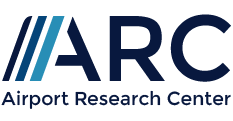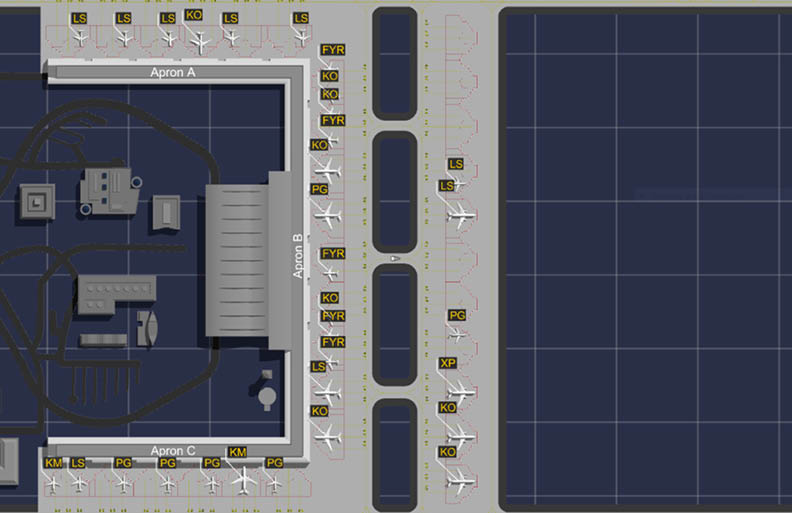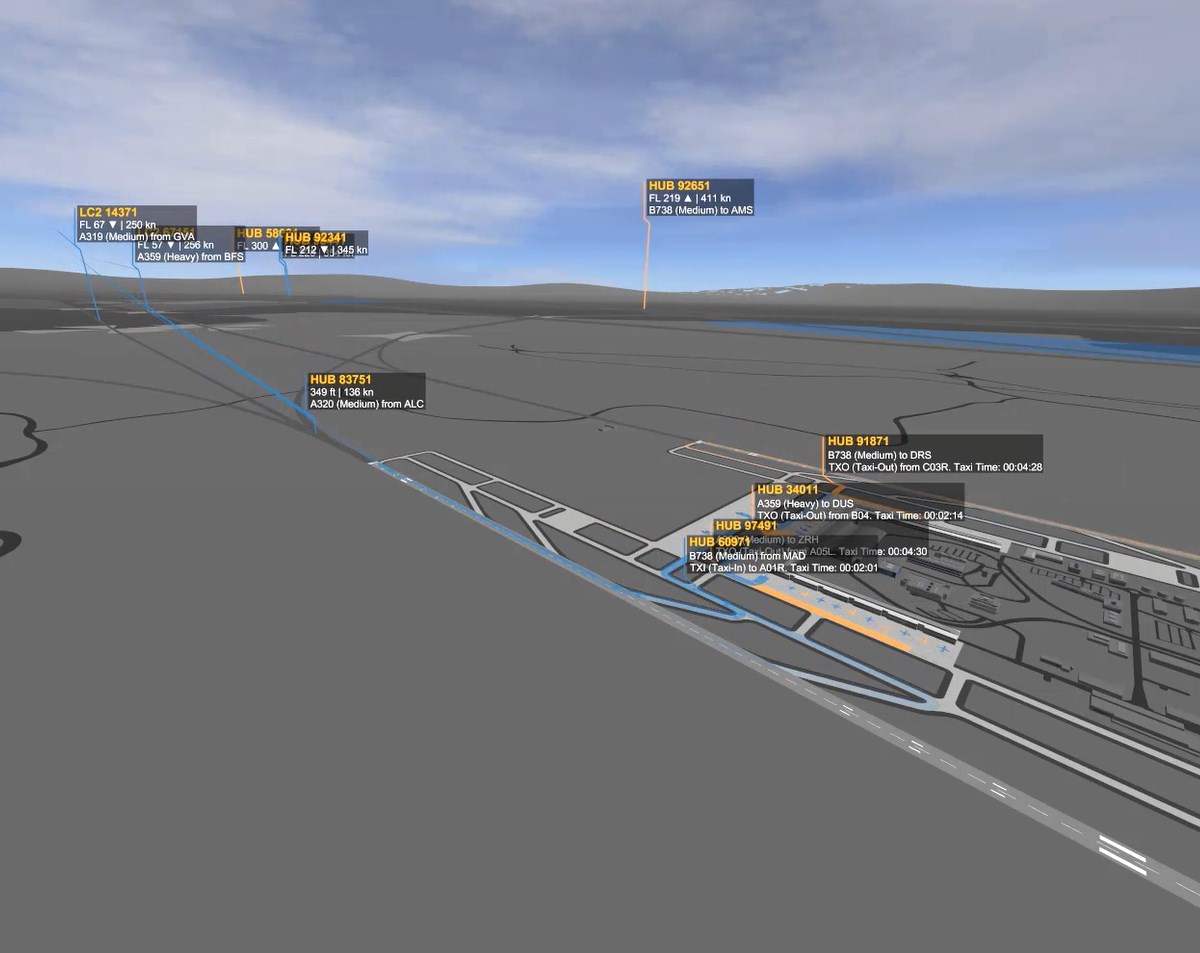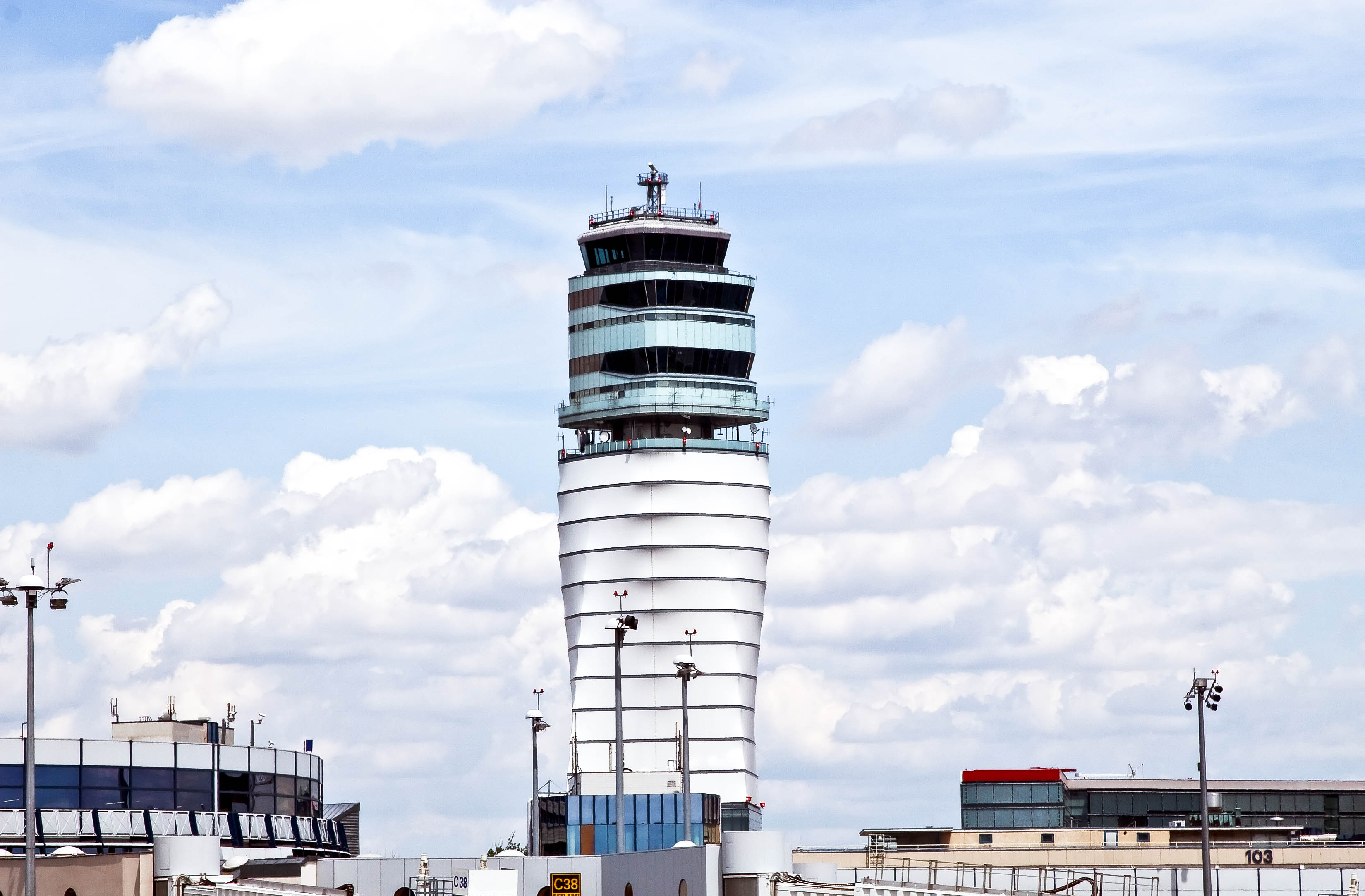Aircraft Traffic and Process Simulation Software
CAST Aircraft is the flexible, comprehensive and most efficient modelling tool for aircraft traffic at airports and in the airspace. CAST Aircraft enables a rapid, scenario based evaluation of systems in scalable levels of detail, for example to remove bottlenecks, plan resources or assess and improve a system‘s capacity.
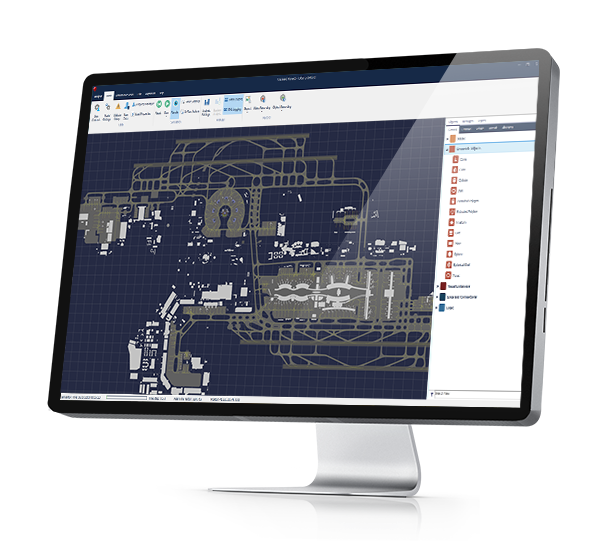
Applications covered by CAST Aircraft include:
- Infrastructure Planning e.g.
- Layout comparison and validation
- Identification of bottlenecks and planning mistakes
- Optimization of construction phasing
- Optimization of operations e.g.
- Optimization of operational strategies e.g. to reduce delays
- Test and improvement of allocation strategies
- Planning of de-icing and snow clearance operations
- Capacity analysis and optimization of capacity e.g.
- Capacity determination for all system components
- Balancing of demand and capacity / slot-planning
- Development and testing of measures to enhance capacity
FACTS & BENEFITS
- Short-, medium- and long-term decision support
- Reduced investment costs and risks
- Optimized resources and higher efficiency
- More capacity, less delays
- Enhanced operational quality
- Optimal communication to stakeholders
- Quick return on invest
- Individual expert support
Central part of a CAST Aircraft model is the 3D infrastructure and environment, including all relevant airside and airspace elements. Operational concepts individually define how aircraft taxi and how runways are used. Airspace and runway operations are based on ATC rules and consider e.g. wake vortex and radar separations, runway exit behavior and the individual properties of an aircraft. It is possible to define individual rules or use default settings. The integrated analysis and dashboards enable immediate and automated result generation of standard KPI or individual analysis.
With CAST Aircraft users can easily increase their understanding of the status quo, detect the problem and choose the right course of action.
Working within CAST’s 3D environment guarantees most efficient application and highest usability by:
- Providing a clear and understandable representation of all aircraft processes
- Use as a reliable testbed for new configuration (‘what-if’ experiments)
- Speeding up and standardizing the planning process
- Dealing with uncertainties and predicting the impact of failures and change.
How CAST Aircraft supports capacity questions
- Analyse the airside capacity
- Determine the runway capacity and the airspace capacity
- Investigate the stand capacity and the gate capacity
- Improvent of maximum / technical capacity
- Calculate the practical capacity
- Declared capacity for airport coordination
- Unlock hidden capacity / enhance runway capacity
- Demand and capacity balancing (DCB)
How CAST Aircraft supports planning
- Validate master planning
- Compare layout options
- Plan construction measures
- Develop project phasing concepts
- Identify and remove potential future bottlenecks
- Test layout of deicing facilities
- Find best runway exits
- Speed up the planning and decision processes
- Show operations in 2D / 3D
How CAST Aircraft supports operations
- Plan operations
- Compare operational concepts
- Test new procedures
- Calculate cost of operations
- Optimize taxi times
- Analyze de-icing strategies
- Enhance punctuality
- Test electric taxiing
- Validation of AI technology
Recommended by leading slot coordination authorities
The CAST Aircraft scenario manager facilitates long, medium and pre-operational airside and runway capacity analysis. Stochastic data input and Monte Carlo like parameter randomization are supported for quick analysis and comparison of multiple runway and airside system configurations.
Detailed flight plans, actual operational rules and specific separation patterns are supported with high accuracy to determine the “declared capacity” and maximize slot utilization.
CAST based methodology for airport and runway capacity declaration is used and recommended by leading slot coordination authorities.
Further Features
- Setup of airspace, runways, taxiways and stands by predefined object library
- Automated CAD data and flight schedule import with several support functions
- Dynamic traffic flow management according to rules and restrictions
- Use of predefined rules or individual configuration
- Accurate calculation of capacities, delays, taxi times and other relevant KPI
- Including A-CDM procedures and A-CDM time-stamps
- Efficient, automated report generation with dashboards and data export
- Modern user interface and high-quality 3D visualization for highest management attention
- Highly rated training and support services for immediate success
CAST Airspace Module
The optional module CAST Airspace is widely extending your options in airspace capacity studies, new organization of routes or sectors as well as procedure changes.
A CAST Airspace model covers the relevant routes to the airport of interest including its SIDs, STARs and sectors for initial, intermediate and final approach. ATC concepts such as speed control, radar vectoring and holding procedures are followed. A special feature is the application of the Eurocontrol BADA performance database: based on industry-leading aircraft performance reference data, BADA ensures realistic altitude as well as speed profiles for the vast majority of aircraft.
References & Customers
CAST has been developed by users for users with partners like e.g. BAA-London Heathrow, Frankfurt Airport, Zurich Airport, Eurocontrol, Dubai Airports, Charles de Gaulle Airport and Airbus.
Worldwide users include airport owners, airport operators, airlines, ground handling companies, ANS provider, logistic companies, authorities, universities and other organizations, as well as engineering, planning and consulting companies.
Selected CAST Aircraft Projects
Vienna International Airport
Airside and Runway Capacity StudyBogota El Dorado International Airport
Runway Capacity Analysis and EnhancementGlossary
Basic explanations and definitions for important and frequently used terms in the fields of Analysis & Runway Capacity Assessment and Airport Simulation and Allocation.
Additional Services
Additional Consulting Services
To ensure a quick start and immidiate success ARC offers consulting services, training as well as support for the initial set-up of a model. As an further option the Continuous Modelling Service (CMS) does not only include the set-up of a 3D-CAST model of the airport but also a predefined simulation service on a regular base in order to check defined airport parts or to test next season’s schedule. For ARC and its worldwide clients a close and long term cooperation is one of the most important key factors to ensure the best possible outcomes and ensure the sustainable use of the CAST technology.

SUPPORT
Subsequent to the training experienced CAST experts take care of the user support. The ARC helpdesk is there to answer technical questions regarding the use of CAST for specific tasks, technical problems or special features of CAST. Further, individual modelling and project support is available as an option.
CAST USER CONFERENCE
Being a CAST User means becoming a member of the CAST User Community. Every year, CAST users from various international airports, airlines and consulting companies come together to network with other experts, share experiences, talk about projects, gain insights into the latest developments and discuss CAST’s vision for the future.
